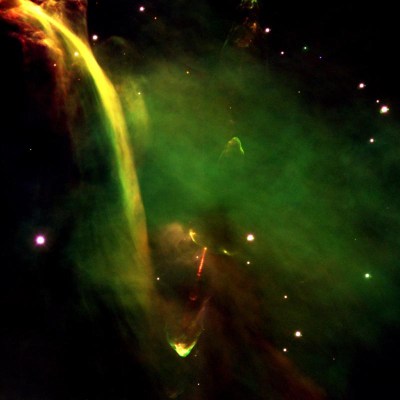EXPLORE: The Sun
1. Life as a Protostar

Herzig-Haro 34; a protostar. Photo courtesy of
Now that you know the life cycle of stars in general, we will now compare it to our sun. Before nuclear fusion, when the sun was still being created in the interstellar nebula, it was just a protostar. A protostar forms when gravity and pressure begin to condense matter in the center of the nebula, but no nuclear fusion is yet taking place. When nuclear fusion begins, a star is "born". Our sun started burning hydrogen at 4.5 billion years ago. When the sun started it was a little smaller, less bright and cooler than it is today. The sun has enough hydrogen to burn steadily for 11 billion.
This chart shows the life cycle of our sun:

Chart courtesy of Tabilzer/Wikimedia.
Sources:
The text has been adapted for a 9th grade level. This was originally the hypertext version of a public lecture given on 1997 June 12 at the Perkins Observatory in Delaware, Ohio, as part of the 1997 New Vistas inAstronomy lecture series. It has been updated a number of times since then.The Once and Future Sun by Richard W. Pogge is licensed under a Creative Commons Attribution-Noncommercial-Share Alike 3.0 United States License. Based on a work at The Ohio State University Department of Astronomy (www.astronomy.ohio-state.edu)
The text has been adapted for a 9th grade level. This was originally the hypertext version of a public lecture given on 1997 June 12 at the Perkins Observatory in Delaware, Ohio, as part of the 1997 New Vistas inAstronomy lecture series. It has been updated a number of times since then.The Once and Future Sun by Richard W. Pogge is licensed under a Creative Commons Attribution-Noncommercial-Share Alike 3.0 United States License. Based on a work at The Ohio State University Department of Astronomy (www.astronomy.ohio-state.edu)